- Home
- -Blog
Understanding SEO Rich Text: The Key to Better Visibility

- 15 Oct 2024
- Shabir Ahmad
SEO Rich Text refers to content enhanced with structured data markup which provides search engines like Google with additional information about the content. This markup can be added directly into the HTML of a page and is used to create rich snippets or rich results that stand out in search engine results pages (SERPs).
Examples of these enhancements include star ratings, images, prices, product availability, and other details that provide more context to users at a glance. Common types of rich snippets include product information, event details, how-to steps, FAQs, and recipe ingredients.
Why is SEO Rich Text Important for Visibility and User Engagement?
The enhanced format of SEO-rich text helps to improve visibility on SERPs by making listings more visually engaging and informative which can drive higher click-through rates (CTR) compared to standard text-only listings. For example:
- Increased CTR: Rich text draws more attention than traditional listings, leading to more clicks as users can quickly gauge the relevance of a result based on the extra information provided.
- Better User Engagement:By providing key details up front, SEO-rich text improves user experience, making it easier for users to find the content they need. For instance, FAQs, star ratings, or product details in search results can provide clarity, reducing the need for users to click multiple links to find information.
How Does SEO Rich Text Differ from Regular SEO Practices?
While traditional SEO primarily focuses on optimizing keywords, meta tags, and content structure to rank higher, SEO-rich text specifically involves adding structured data or schema markup to the page's HTML.
This markup tells search engines exactly what type of content is on the page, allowing them to display it as rich snippets. The use of structured data allows search engines to index more precisely, which not only aids in visibility but also provides users with immediate, relevant information in a condensed format. An AI script writer can generate schema-friendly scripts or snippets to ensure consistent metadata tagging across all your web page.
Unlike standard SEO practices, which do not alter the search results' appearance, rich text directly enhances the look and usefulness of these results.
The Key Benefits of SEO Rich Text
Table: Comparison of CTR for Rich Text vs. Standard Results
| Type of Search Result | Average Click-Through Rate (CTR) |
|---|---|
| Standard Search Result | 41% |
| Rich Text / Rich Snippet | 58% |
Data Source: Based on insights from various SEO studies and sources such as Ahrefs and Marketing Lad.
How Rich Snippets Can Drive More Traffic
SEO-rich text helps your site stand out in search engine results by providing additional, relevant details that catch the user's eye. This extra information, whether it's a star rating, recipe ingredients, product price, or FAQ, makes it easier for users to find what they need without clicking multiple results.
This visibility often translates into higher CTR as searchers are more likely to click on a listing that appears more detailed and informative at a glance. Rich snippets allow your content to capture attention in a crowded SERP environment, giving you a competitive edge over standard search results.
For instance:
- Product Pages: Showcasing price, availability, and ratings on a product listing gives potential buyers a quick look at whether the product fits their needs, making them more likely to click on the result.
- How-to Guides: Highlighting key steps and estimated completion times can attract users looking for specific instructions, particularly on mobile devices where users are often searching for quick answers.
Boosting Brand Credibility and User Engagement
SEO-rich text not only drives more clicks but also builds trust and credibility for your brand. When users see additional details in a search result, such as reviews or event details, it adds an air of legitimacy and professionalism to the listing. Here's how it works:
Core Types of SEO Rich Text and How They're Used
Implementing different types of SEO-rich text helps make your content more accessible and attractive to users by adding structured data that enhances how it appears in search results. Here's a breakdown of the most common types:
- Product Markup
- Purpose: Displays essential product details directly in search results, such as price, availability, and star ratings.
- Use Case: Ideal for e-commerce sites and online retailers. Product markup allows potential buyers to quickly assess the information they need, making them more likely to click on listings with competitive prices or highly rated products.
- Example Schema Markup Code for Displaying Product Details:
Wireless Headphones
This JSON-LD code snippet demonstrates how to use schema markup to display essential product details, such as price, availability, and ratings, for a wireless headset with mic in search results. This setup is ideal for e-commerce sites that want to enhance visibility and attract clicks by providing users with valuable information upfront.
- Review Snippets
- Purpose: Show customer feedback, such as star ratings and review summaries, directly in search results, adding a level of credibility and trust.
- Use Case: Useful for service providers, local businesses, products, and media reviews. Review snippets influence user decisions by presenting social proof upfront. Review snippets help improve the CTR when you rank on Google which in turn will help you rank higher locally.
- Example:
Review Snippet for a Local Plumbing Business
Here's a code snippet that a local plumbing business can use to showcase customer feedback, star ratings, and review summaries directly in search results. This is ideal for building trust and attracting new customers who are looking for a reputable plumber in their area, especially when supported by effective plumber seo services.
- FAQs
- Purpose: Improves search visibility by answering common questions directly in the SERP, which can drive traffic and increase user engagement.
- Use Case: Useful for content pages, customer service sections, and blogs where common queries are answered. FAQ snippets reduce the need for users to click multiple links to find answers, offering quick, direct access to information.
- Example:
Here's a code snippet for implementing an FAQ section using JSON-LD schema markup. This example includes questions like “What is SEO Rich Text?” and “How do I add structured data to my site?” to provide users with answers directly in the SERP: - Recipe Snippets
- Purpose: Includes ingredients, cooking time, ratings, and other helpful details for recipes, making it easy for users to find suitable options.
- Use Case: Commonly used by food blogs and culinary websites. Recipe snippets allow users to gauge a recipe's suitability based on their preferences (e.g., quick prep time, high ratings).
- Example: Here's a code snippet for a Chicken Alfredo recipe using JSON-LD schema markup. This snippet includes details like ingredients, cooking time, rating, and other helpful information commonly seen in recipe snippets on SERPs:
- Event Information
- Purpose: Displays important details about events such as dates, times, locations, and ticket availability, allowing users to find relevant events quickly. .
- Use Case: Ideal for venues, concert promoters, theaters, and organizations hosting public events. This markup helps users locate event details without navigating through multiple links.
- Example:Here's a code snippet using JSON-LD schema markup for the “Jazz Festival” example, showcasing event details such as the name, date, time, location, and ticket availability. You can include this directly in the HTML of the event page within the
<head> or <body>tags.
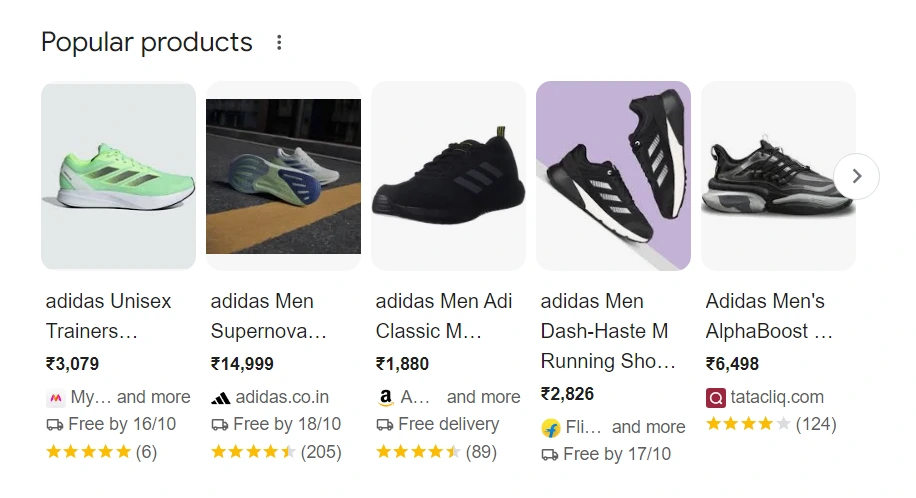
<script type="application/ld+json">
{
"@context": "https://schema.org/",
"@type": "Product",
"name": "Wireless Headset with mic",
"image": "https://example.com/photos/headphones.jpg",
"description": "High-quality wireless headphones with noise cancellation.",
"sku": "12345",
"mpn": "HDP-001",
"brand": {
"@type": "Brand",
"name": "SoundPro"
},
"offers": {
"@type": "Offer",
"url": "https://example.com/product/wireless-headphones",
"priceCurrency": "USD",
"price": "29.99",
"priceValidUntil": "2024-12-31",
"itemCondition": "https://schema.org/NewCondition",
"availability": "https://schema.org/InStock"
},
"aggregateRating": {
"@type": "AggregateRating",
"ratingValue": "4.5",
"reviewCount": "150"
}
}
</script>
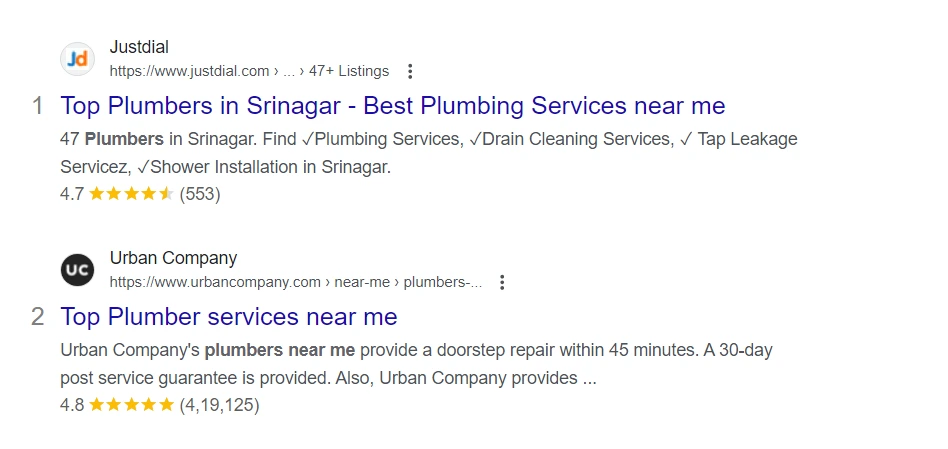
<script type="application/ld+json">
{
"@context": "https://schema.org",
"@type": "LocalBusiness",
"name": "City Plumbing Services",
"aggregateRating": {
"@type": "AggregateRating",
"ratingValue": "4.8",
"reviewCount": "150"
},
"review": {
"@type": "Review",
"author": {
"@type": "Person",
"name": "Jane Smith"
},
"reviewRating": {
"@type": "Rating",
"ratingValue": "5"
},
"reviewBody": "Great service! The plumber arrived on time, fixed the leak quickly, and was very professional."
},
"address": {
"@type": "PostalAddress",
"streetAddress": "123 Main St",
"addressLocality": "Springfield",
"addressRegion": "IL",
"postalCode": "62701",
"addressCountry": "US"
},
"telephone": "+1-555-123-4567"
}
</script>
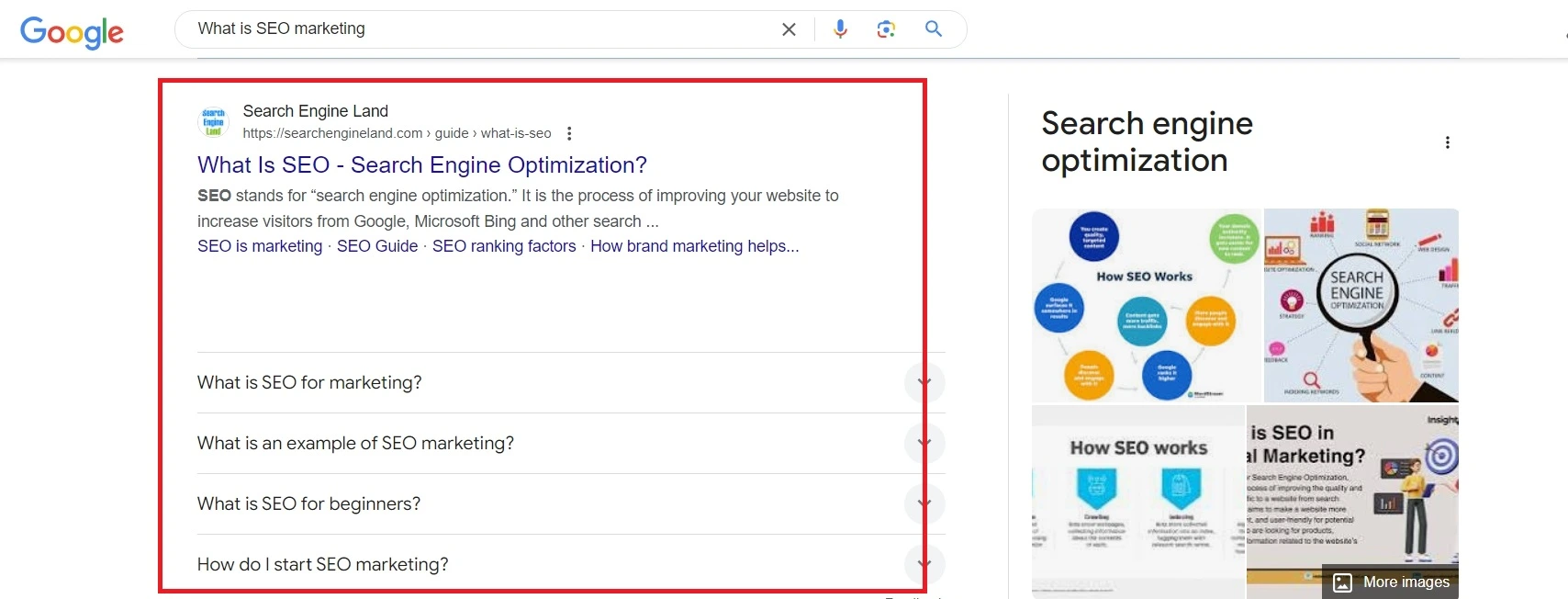
<script type="application/ld+json">
{
"@context": "https://schema.org",
"@type": "FAQPage",
"mainEntity": [
{
"@type": "Question",
"name": "What is SEO Rich Text?",
"acceptedAnswer": {
"@type": "Answer",
"text": "SEO Rich Text is content that includes structured data markup, allowing search engines to display enhanced results, such as rich snippets, directly in the search results. This can include information like ratings, product details, and FAQs, which improve visibility and user engagement."
}
},
{
"@type": "Question",
"name": "How do I add structured data to my site?",
"acceptedAnswer": {
"@type": "Answer",
"text": "To add structured data, you can use JSON-LD markup, which can be added to the HTML of your page. Alternatively, plugins like Yoast and Rank Math make it easy to implement structured data on WordPress sites without coding."
}
}
]
}
</script>
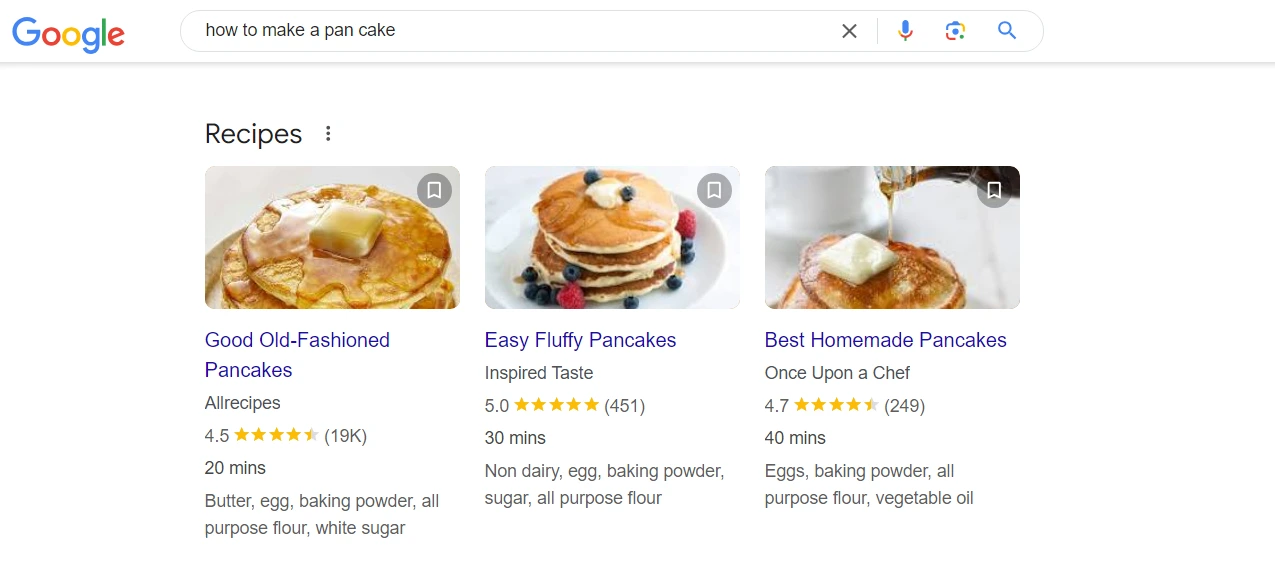
<script type="application/ld+json">
{
"@context": "https://schema.org",
"@type": "Recipe",
"name": "Chicken Alfredo",
"author": {
"@type": "Person",
"name": "Chef Maria"
},
"description": "A quick and delicious Chicken Alfredo recipe with creamy Parmesan cheese sauce and tender pasta.",
"image": "https://example.com/images/chicken-alfredo.jpg",
"prepTime": "PT10M",
"cookTime": "PT20M",
"totalTime": "PT30M",
"recipeYield": "4 servings",
"recipeCategory": "Dinner",
"recipeCuisine": "Italian",
"keywords": "chicken alfredo, pasta, Italian, dinner recipe",
"nutrition": {
"@type": "NutritionInformation",
"calories": "600 calories"
},
"aggregateRating": {
"@type": "AggregateRating",
"ratingValue": "4.5",
"ratingCount": "150"
},
"recipeIngredient": [
"1 lb chicken breast, cubed",
"2 cups heavy cream",
"1 cup grated Parmesan cheese",
"1 tbsp olive oil",
"3 cloves garlic, minced",
"8 oz fettuccine pasta",
"Salt and pepper to taste",
"Fresh parsley, for garnish"
],
"recipeInstructions": [
{
"@type": "HowToStep",
"text": "Cook pasta according to package instructions. Drain and set aside."
},
{
"@type": "HowToStep",
"text": "In a large skillet, heat olive oil over medium heat. Add chicken and season with salt and pepper. Cook until golden brown, about 5-7 minutes."
},
{
"@type": "HowToStep",
"text": "Add garlic and cook for 1 minute until fragrant."
},
{
"@type": "HowToStep",
"text": "Pour in the heavy cream and bring to a simmer. Stir in Parmesan cheese and let it melt, creating a creamy sauce."
},
{
"@type": "HowToStep",
"text": "Add the cooked pasta to the skillet and toss to coat in the sauce. Garnish with fresh parsley and serve warm."
}
]
}
</script>
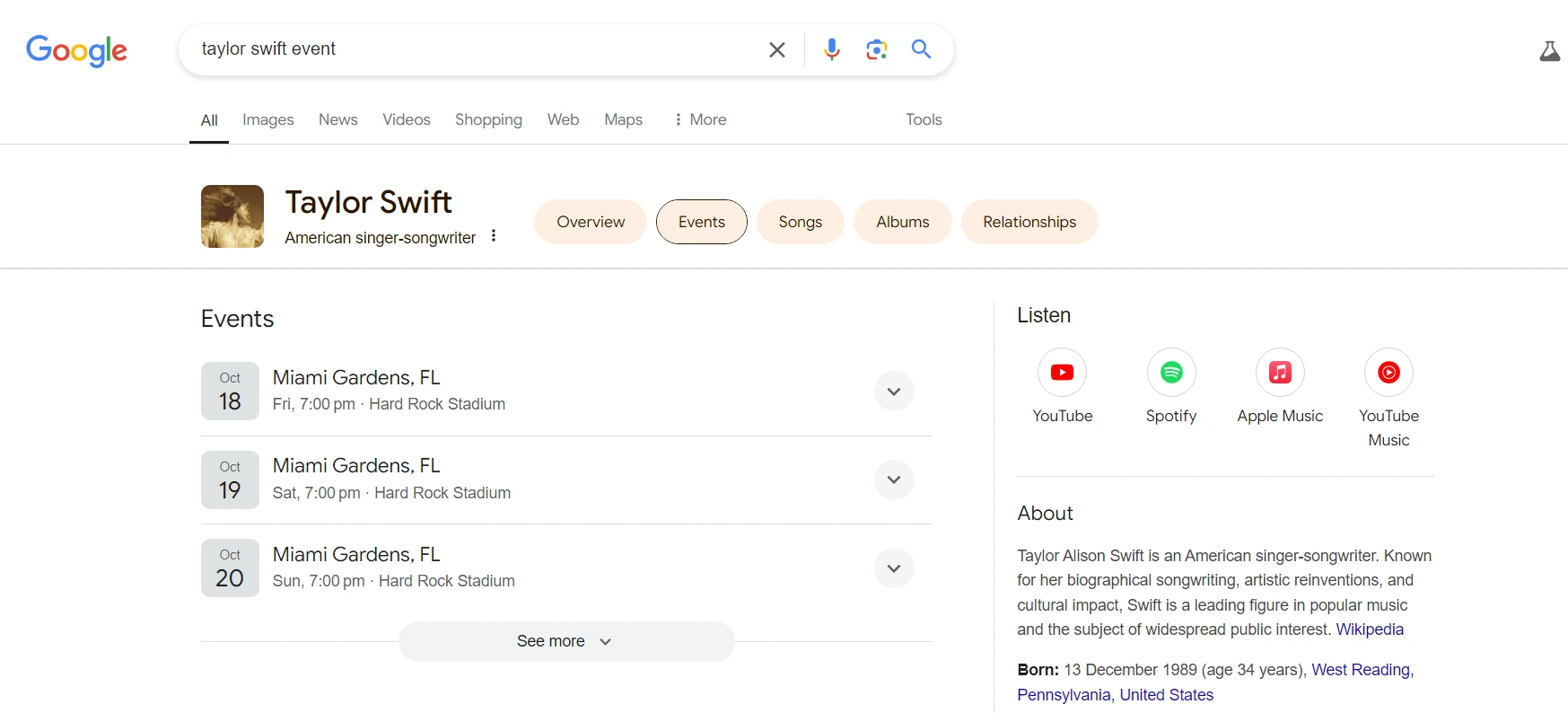
<script type="application/ld+json">
{
"@context": "https://schema.org",
"@type": "Event",
"name": "Jazz Festival",
"startDate": "2024-08-12T19:00",
"eventStatus": "https://schema.org/EventScheduled",
"location": {
"@type": "Place",
"name": "City Concert Hall",
"address": {
"@type": "PostalAddress",
"streetAddress": "123 Music Ave",
"addressLocality": "Austin",
"addressRegion": "TX",
"postalCode": "73301",
"addressCountry": "US"
}
},
"image": "https://example.com/images/jazz-festival.jpg",
"description": "Join us for an unforgettable evening of live jazz at the City Concert Hall on August 12, 2024. Tickets available now!",
"offers": {
"@type": "Offer",
"url": "https://example.com/tickets/jazz-festival",
"price": "50",
"priceCurrency": "USD",
"availability": "https://schema.org/InStock",
"validFrom": "2024-07-01T00:00"
},
"performer": {
"@type": "PerformingGroup",
"name": "The Jazz Masters"
}
}
</script>
These various types of SEO-rich text not only enhance your content's visibility but also provide specific information directly in search results. By using the appropriate type of markup for your content, you can make your site more attractive to both users and search engines.
Step-by-Step Guide to Adding Rich Text Markup
Understanding Schema Types: JSON-LD vs. Microdata
When implementing rich text, you have two primary schema types to choose from: JSON-LD and Microdata. Here's a quick comparison:
- JSON-LD: This format, recommended by Google, is easier to work with because it's written in JavaScript and can be added anywhere in the HTML, such as the <head> or <body>tags. It doesn't disrupt the existing HTML and is especially compatible with content management systems (CMS) like WordPress.
- Microdata: This format involves embedding metadata directly within your HTML elements. While it can offer a more detailed markup approach, itw's more complex and can be harder to maintain. However, Microdata may be useful for certain types of content where more granular detail is beneficial.
Choosing the Right Schema for Your Content
Selecting the appropriate schema type depends on the kind of content you want to enhance. Here's a simple guide:
- For Product Listings: Use Product schema to add details like price, availability, and ratings.
- For Reviews: The Review schema displays user feedback and ratings, which can increase credibility.
- For FAQs: FAQ schema makes your content eligible for an FAQ-rich snippet, which answers common questions directly on the SERP.
- For How-to Guides: Use How To schema for instructional content. This is great for tutorials, DIYs, or any process that involves steps.
You can find comprehensive schema documentation on Schema.org to help decide on the best schema type for your content.
How to Use Plugins Like Yoast or Rank Math for Easy Implementation
If you're using a CMS like WordPress, you can simplify the process of adding schema markup by using SEO plugins like Yoast or Rank Math. Here's a basic setup guide:
- Install the Plugin: Download and activate Yoast or Rank Math from the WordPress Plugin Directory.
- Navigate to Schema Settings: Both plugins have a dedicated Schema tab where you can choose your desired schema type for each post or page.
- Choose the Schema Type: For each piece of content, select the relevant schema type (e.g., Article, FAQ, Product). Each option provides fields to fill out specific details, like star ratings for reviews or prices for products.
- Save and Test: After saving your settings, you can test your page's schema using Google's Rich Results Test to make sure it's correctly implemented.
Table: Overview of Common Schema Types and Their Uses
| Schema Type | Content-Type | Purpose | Example |
|---|---|---|---|
| Product | E-commerce products | Display price, availability, ratings | “$29.99, In Stock, 4.5 stars” |
| Review | Services, products, media | Show star ratings and review count | “4.8 stars based on 150 reviews” |
| FAQ | Informational/Support content | Provide answers to common questions | “What is SEO Rich Text?” answered on SERP |
| HowTo | Tutorials and guides | Show step-by-step process | “Step 1: Open settings…” |
| Recipe | Food and cooking content | Highlight ingredients, cook time | “Chicken Alfredo: 30 min, 4.5 stars” |
| Event | Events, concerts, workshops | Show event dates, times, and locations | “Jazz Festival, Aug 12, 2024, 7 PM” |
Using the right schema type for each content type ensures that your content is eligible for enhanced search results, making it more attractive and accessible to users on the SERP. Following this guide can streamline the process of adding SEO-rich text to your site and improve overall search visibility.
Tools for Creating and Testing SEO Rich Text
Using the right tools can make it easy to create, implement, and monitor SEO-rich text on your website. Here's an overview of the most effective tools for each stage of the process.
- Google's Structured Data Testing Tool
- Purpose: This tool allows you to check if your structured data is implemented correctly on your web pages. It identifies errors and warnings in your markup, helping you troubleshoot issues before your content goes live.
- How to Use: Simply enter the URL of the page you want to test, or paste your HTML code directly. The tool will highlight any issues with your schema so you can make corrections.
- Access: Google's Structured Data Testing Tool is free to use and ideal for validating JSON-LD, Microdata, and RDFa formats.
- Schema Markup Helper and Rich Results Test
- Schema Markup Helper: This tool helps generate schema markup by guiding you through the tagging process for different content types. It's particularly helpful if you're new to schema markup, as it provides a visual interface for tagging content on your page.
- Rich Results Test: After implementing structured data, you can use Google's Rich Results Test to check if your page is eligible for rich results. It shows which rich features (e.g., recipes, FAQs) your page qualifies for, based on the schema.
- How to Use: Go to the Rich Results Test, paste your page URL or HTML, and run the test. You'll see a report of the rich results your page qualifies for and any errors to address.
- Using Google Search Console to Track Performance
- Purpose: Google Search Console is essential for tracking how your structured data is performing. It shows if any issues are detected in your structured data, and provides performance metrics such as clicks, impressions, and CTR for pages with rich snippets.
- How to Use: In Search Console, navigate to the Enhancements section to find reports on structured data. The Performance section also provides insights on how pages with rich text perform compared to those without, helping you measure the impact of rich text on user engagement.
- Access: Google Search Console is a free tool, and setting it up provides a direct line of communication with Google, which can notify you of any structured data errors that might affect your visibility.
- Additional Tools for Streamlining Rich Text Implementation
- Yoast SEO Plugin (Free/Paid): An SEO plugin for WordPress that simplifies the process of adding schema markup. It supports a range of schema types, including Article, FAQ, and HowTo.
- Rank Math SEO Plugin (Free/Paid): Another popular WordPress plugin that provides comprehensive schema support. It includes a user-friendly interface for selecting and customizing schema types.
- Merkle's Schema Markup Generator (Free): This web-based tool allows you to quickly generate JSON-LD code for various content types, such as products, reviews, and local business listings. It's useful if you prefer manual implementation over plugins.
- Ahrefs or SEMrush (Paid): While these tools focus on SEO analytics, they also offer insights into your website's structured data, helping you track the CTR and ranking performance of rich snippets.
- Tips:
- Use free tools like Google Search Console and the Structured Data Testing Tool for core validation and performance tracking.
- Invest in a plugin (Yoast or Rank Math) if you use WordPress, as it simplifies the process and reduces the chance of errors.
- For non-WordPress sites, Schema Markup Generator can create code snippets quickly without requiring technical expertise.
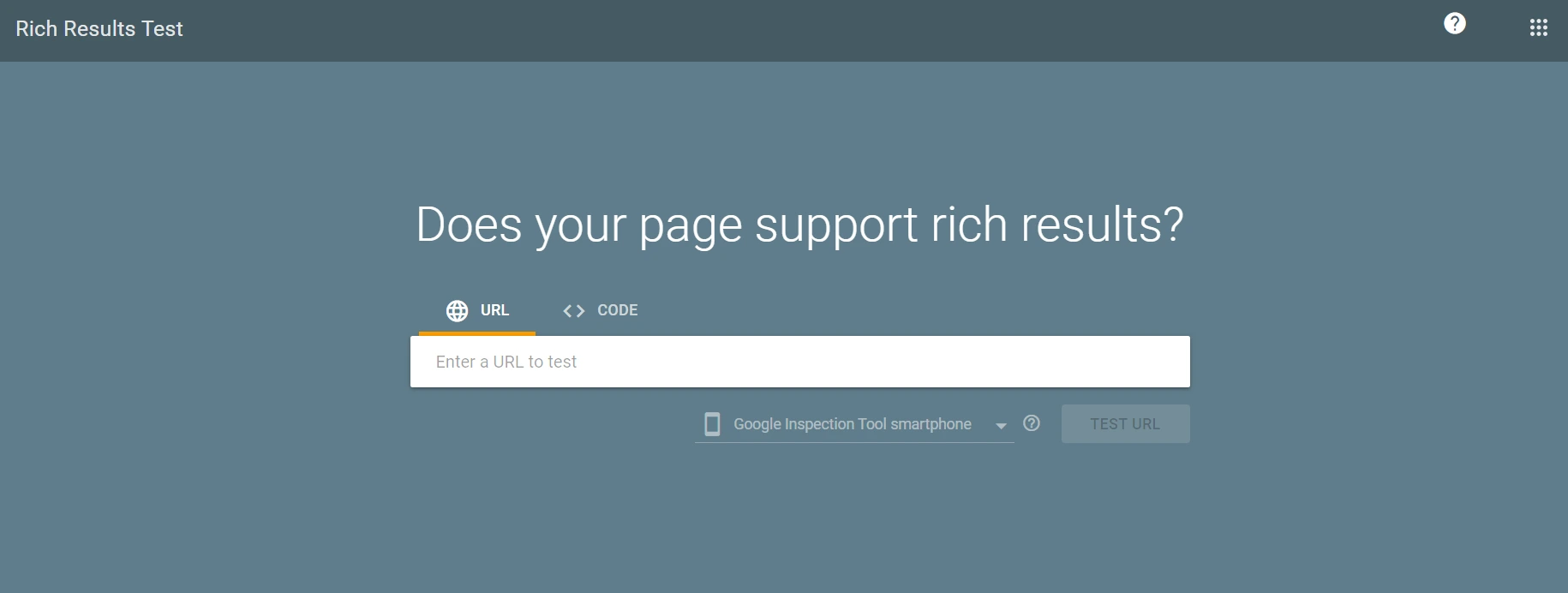
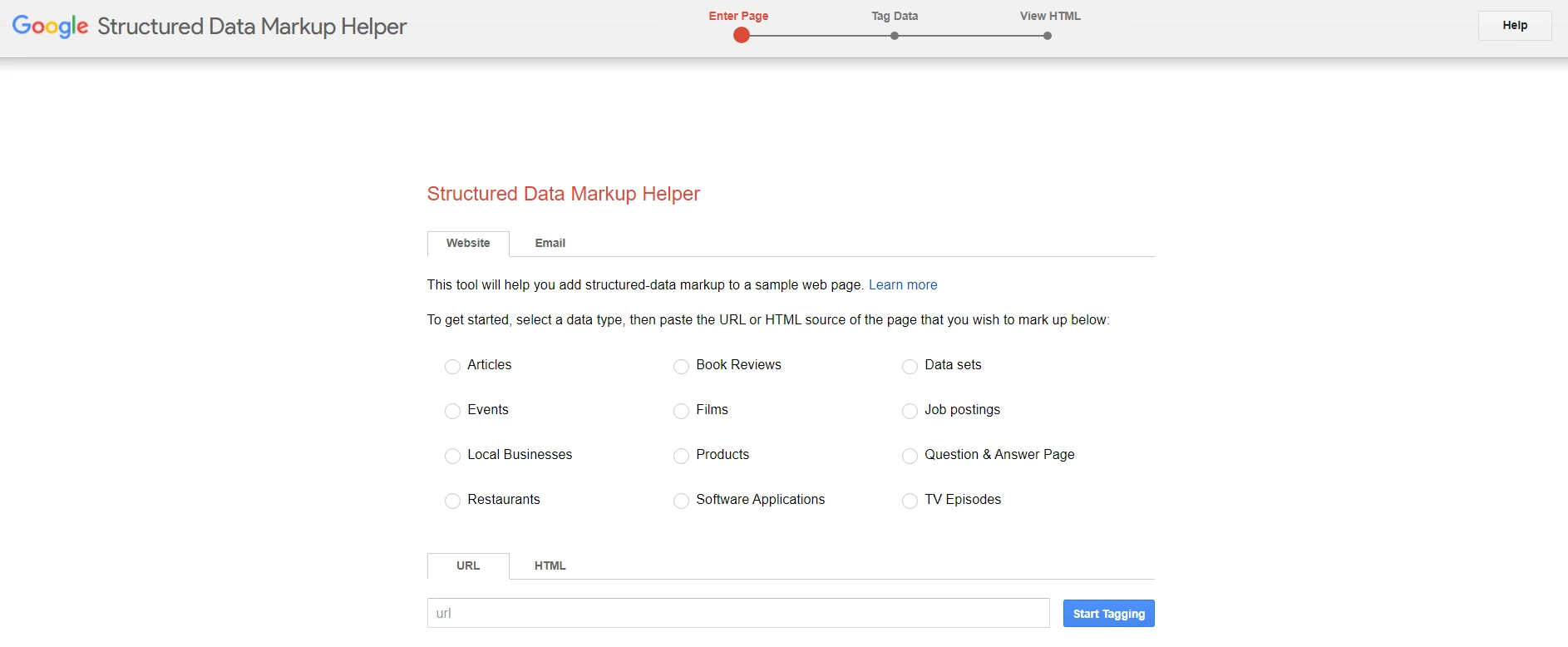
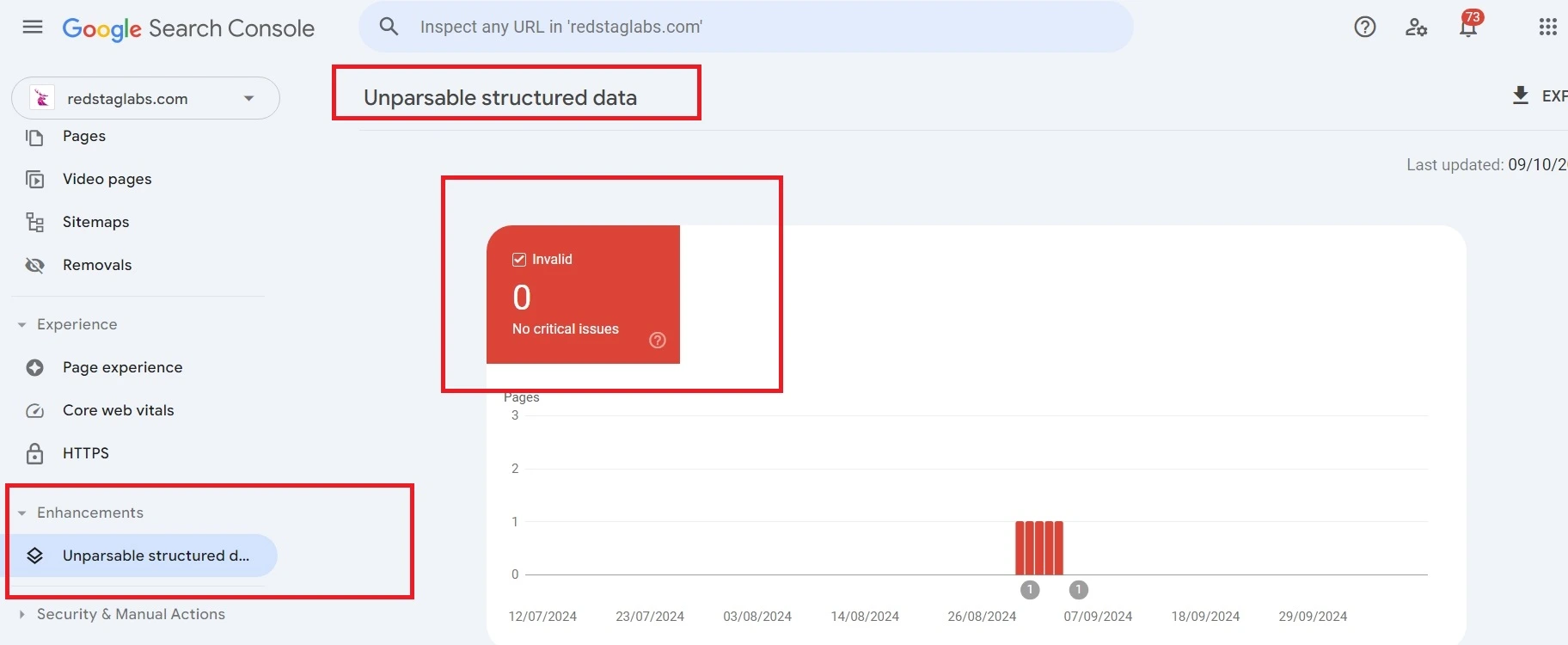
By using these tools, you can streamline the process of implementing, testing, and optimizing SEO-rich text on your website, making it easier to stand out in search results and drive more engagement.
Common Mistakes to Avoid with SEO Rich Text
Implementing SEO-rich text can greatly benefit your site's visibility and user engagement, but misusing it can lead to penalties, poor performance, or wasted effort. Here are some common mistakes to be aware of and avoid:
- Overusing Rich Text Tags
- Explanation:It can be tempting to use multiple rich text tags on a page, but overloading a page with unnecessary markup can make it appear spammy to search engines. Google recommends using only the most relevant schema types for each page. For instance, if a page is purely an article, avoid adding irrelevant schema types like product or recipe markup.
- Risk: Overuse can lead to search engines ignoring your markup or, worse, penalizing your site for manipulative practices.
- Solution: Focus on quality over quantity. Use only the schema types that align directly with the page content, ensuring accuracy and relevance.
- Incorrect Schema Types
- Explanation:Using the wrong schema type can confuse search engines, potentially resulting in missed opportunities or even lower rankings. For example, marking up a service page with a product schema can lead to improper indexing, affecting both visibility and accuracy in search results.
- Risk: Misleading or incorrect schema types can result in penalties and make your content less accessible to users.
- Solution: Always double-check that the schema type you use fits the content type. For guidance, refer to Schema.org for definitions and examples of each schema type to avoid misinterpretation.
- Not Updating Rich Text Regularly
- Explanation:Like any other aspect of SEO, rich text needs regular updates to stay accurate and relevant. Outdated information, such as an expired event date or unavailable product, can hurt user trust and your overall SEO performance.
- Risk: Outdated schema information can lead to a poor user experience and may even cause Google to stop displaying your rich snippets.
- Solution: Set a schedule for regular schema reviews, especially for time-sensitive content like events, products, or seasonal promotions. Update or remove outdated markup as needed.
Table: Dos and Don’ts for SEO Rich Text Implementation
| Do | Don't |
|---|---|
| Use the most relevant schema type for each content type | Overuse schema types on a single page |
| Regularly update your rich text for accuracy | Leave outdated markup in place |
| Validate your markup with Google's Structured Data Testing Tool | Assume your markup is correct without testing |
| Follow Google's guidelines on schema usage | Use incorrect or misleading schema types |
| Track rich text performance in Google Search Console | Ignore changes or updates to structured data best practices |
By avoiding these common mistakes, you'll ensure that your SEO-rich text is not only effective but also beneficial for both search engines and users. Following best practices for schema implementation helps maintain credibility and enhances the long-term performance of your content.
Advanced Tips for Enhancing SEO with Rich Text
To maximize the impact of SEO-rich text, consider the following advanced strategies that go beyond basic implementation. These tips can help improve your rankings, maintain relevance, and better track the effectiveness of your rich snippets.
- Leveraging High-Traffic Keywords Within Schema
- Explanation: Integrating high-traffic keywords into the schema markup can increase your page's relevance for targeted search queries. For example, in your FAQ schema, using keywords in the questions and answers can help Google understand the page's main focus. This can improve your chances of appearing in searches that include those terms.
- How to Implement: Identify keywords with high search volume and natural relevancy to your content, and use them where applicable within your schema elements, such as the name and description fields. Tools like Ahrefs and SEMrush can help you pinpoint these keywords and gauge their competitiveness.
- Impact: Including relevant keywords can enhance the visibility of your rich snippets for specific search queries, potentially increasing click-through rates for users looking for those exact terms.
- Using Seasonal Updates to Stay Relevant
- Explanation: Seasonal and time-sensitive updates in your schema markup can help keep your content relevant to current trends, holidays, or events. For instance, an online retailer might update product schema to highlight holiday discounts or new product arrivals.
- How to Implement: Schedule regular content updates, particularly for items like Event, Offer, and Product schemas. You can even adjust schema to reflect season-specific promotions, like “Back to School” or “Holiday Sales.”
- Impact: Seasonal updates not only keep your content fresh but also attract users looking for timely information. For businesses with regular sales cycles or seasonal products, this approach can lead to higher engagement and increased conversion rates during peak times.
- Tracking the Impact of Rich Text Using Analytics Tools
- Explanation: Understanding how well your SEO-rich text performs is crucial for refining your strategy. Google Search Console, for instance, provides insights into impressions, clicks, and click-through rates (CTR) for pages with rich snippets. This data allows you to see if your rich text markup is helping you achieve your SEO goals.
- How to Implement:
- Google Search Console: Navigate to the Performance section to view metrics for pages with rich snippets. The Enhancements section shows any structured data issues, and you can monitor impressions and CTR to measure engagement.
- Google Analytics: Set up goals to track conversions and bounce rates for pages with rich snippets, and compare their performance against standard pages.
- Third-Party Tools: Platforms like Ahrefs, SEMrush, or Moz can track rankings and provide insights into how rich snippets impact your search visibility. Use these tools to monitor fluctuations in your rich text-enabled pages and refine content based on performance metrics.
- Impact: By regularly analyzing this data, you can fine-tune your SEO-rich text strategy. If you notice specific pages or schema types performing well, consider applying similar strategies across other areas of your site. Conversely, if certain rich snippets aren't attracting clicks, you can revise the markup to make it more compelling.
These advanced tactics enable you to stay competitive in SEO-rich text implementation by maximizing the effectiveness and relevance of your structured data. By leveraging high-traffic keywords, making seasonal updates, and monitoring performance, you'll optimize your SEO-rich text for better engagement and improved search visibility.
Conclusion
SEO-rich text is a powerful tool that can make your content more visible, engaging, and trustworthy in search results. By using structured data to create rich snippets like product details, reviews, FAQs, and more, you can increase your click-through rates and provide users with valuable information upfront. Avoid common mistakes, like overusing tags or failing to update your schema regularly, and make the most of advanced tactics, such as seasonal updates and performance tracking. With the right implementation and ongoing refinement, SEO-rich text can significantly enhance your digital presence and keep you competitive in search rankings.



